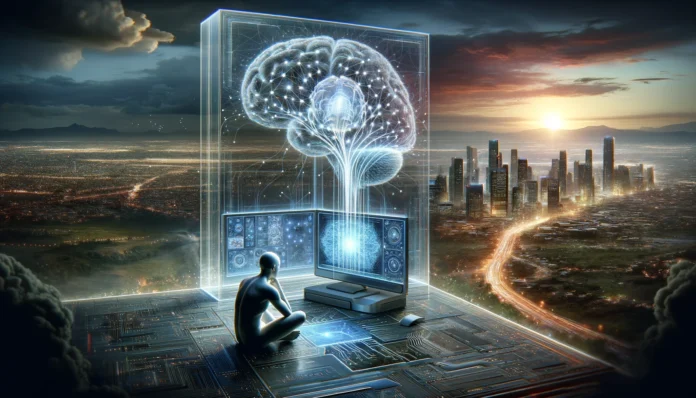In the ever-evolving landscape of artificial intelligence (AI), there’s a fascinating intersection between technology and neuroscience that’s shaping the future of intelligent machines. This convergence, often referred to as neuro-inspired computing, draws inspiration from the intricate workings of the human brain to develop AI systems with unprecedented capabilities.
At the heart of this revolution lies the quest to replicate the brain’s remarkable efficiency and adaptability in silicon. Traditional AI models, while powerful, often fall short when it comes to tasks requiring context understanding, pattern recognition, and real-time learning – all areas where the human brain excels. Neuro-inspired computing seeks to bridge this gap by mimicking the brain’s neural networks and synaptic connections, unlocking new frontiers in AI research and development.
Imagine a future where AI systems not only process data but also interpret it in a manner akin to human cognition. This vision drives researchers to explore novel computing architectures that emulate the brain’s parallel processing capabilities and hierarchical organization. By harnessing the principles of neural computation, AI algorithms can perform complex tasks such as image recognition, natural language understanding, and decision-making with unprecedented speed and accuracy.
One of the key enablers of neuro-inspired computing is the development of neuromorphic hardware – specialized chips and circuits designed to emulate the brain’s neural architecture. These chips, composed of millions of artificial neurons and synapses, enable AI systems to process information in a manner that closely mirrors the brain’s neural networks. The result is a significant leap forward in terms of energy efficiency, scalability, and computational power, paving the way for the next generation of intelligent machines.
Moreover, neuro-inspired AI holds immense promise in fields such as robotics, healthcare, and autonomous systems. By imbuing machines with human-like cognitive abilities, researchers aim to create AI systems that can adapt to changing environments, learn from experience, and make decisions autonomously. From robotic assistants capable of navigating complex environments to medical diagnostic tools that can interpret imaging data with human-like precision, the potential applications of neuro-inspired AI are limitless.
But the journey towards achieving true artificial intelligence is not without its challenges. Despite significant advancements in neuro-inspired computing, researchers are still grappling with fundamental questions surrounding the nature of intelligence and consciousness. Understanding how the brain processes information, forms memories, and generates consciousness remains one of the greatest scientific mysteries of our time.
Furthermore, ethical considerations loom large as we venture into the realm of neuro-inspired AI. As intelligent machines become increasingly autonomous and capable of human-like cognition, questions arise regarding accountability, privacy, and the ethical implications of AI decision-making. Ensuring that these systems are developed and deployed responsibly is paramount to harnessing the transformative potential of neuro-inspired computing while mitigating potential risks and unintended consequences.
In conclusion, the fusion of neuroscience and artificial intelligence represents a paradigm shift in the quest for intelligent machines. By drawing inspiration from the brain’s neural architecture, researchers are unlocking new possibilities for AI systems with human-like cognitive abilities. From neuromorphic hardware to autonomous robots, the applications of neuro-inspired AI are poised to revolutionize industries and reshape the way we interact with technology. As we continue to push the boundaries of AI research, it’s essential to approach this journey with a sense of curiosity, responsibility, and ethical awareness.





